Time tracking isn’t only useful but also necessary for nonprofit organizations. As some US nonprofits have both paid staff and volunteers, keeping an accurate record of employee hours worked helps them comply with labor laws.
By tracking the time spent on projects, nonprofits can provide accurate reports to grantors and ensure transparency. This helps build trust and secure future donations.
With so many nonprofit time trackers available on the market, it can be challenging to choose the right one for your organization’s needs.
To make your selection process easier, I’ve tried out 4 nonprofit time tracking tools currently on the market, using their free trials.
So, let me share my thoughts about how each app could benefit you and your nonprofit regardless of your organization’s type and size.

Why trust us?
The apps we talk about are selected, tested, and written about by human reviewers who follow strict review and editorial guidelines. We pick solutions that are practical, purposeful, and can offer real value for the specific use case or business context we’re covering — while also being justified in their pricing. Our methodology is transparent, clear, and available to everyone:
#1: Clockify — best for effortless time tracking and reporting
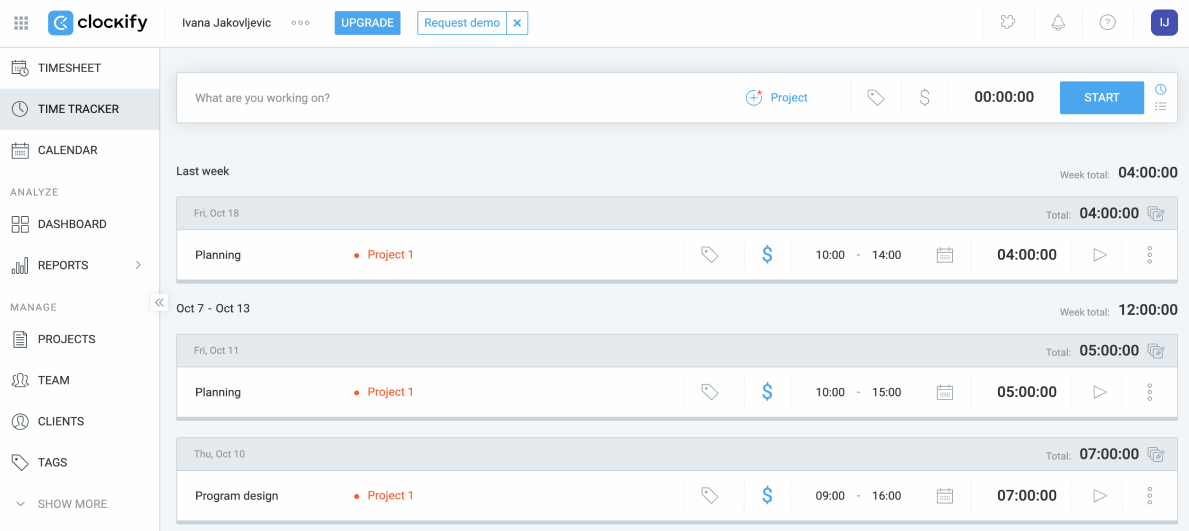
Clockify is a free time tracker for nonprofits that lets you track the time your employees and volunteers spend on tasks and projects — and analyze it for maximum efficiency.
How does Clockify work?
What my team and I like about Clockify is that it offers several easy options for tracking time. In short, I can track my time spent on tasks via timer in real time. To do that, I just have to:
- Type what I’m working on,
- Select the appropriate project, and
- Click Start.
To finish tracking time, I need to click Stop.

Alternatively, I can add my hours manually at the end of the day via timesheets in Clockify.

Whether I need to track time spent on fundraising, administration, or any other activity, Clockify helps me do it efficiently, allowing me to have more time for meaningful work.
Apart from providing flexible timekeeping options, this powerful tool lets me analyze my team’s time in reports. For example, I use Clockify’s detailed report to see who worked on what, when, and for how long.
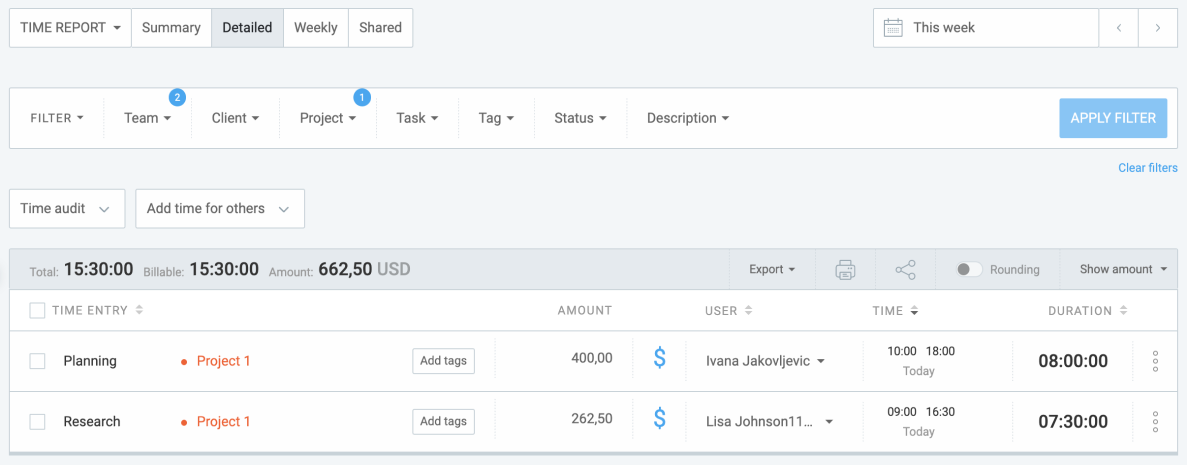
This way, I can check my team members’ efficiency and find ways to help them improve it if needed.
Another important thing about Clockify’s time reports is that I can export them in PDF, Excel, or CSV format.
Moreover, Clockify allows me to set hourly rates and calculate billable hours for simplified payroll processing.
I can also create invoices based on billable time and expenses using Clockify, which is handy if I need to bill clients for services or products provided.
Why use Clockify?
While testing Clockify, I noticed how simple yet versatile this tool is. In addition to timekeeping features, Clockify provides detailed reporting and scheduling functionalities.
Moreover, Clockify allows me to set reminders for my team to ensure everyone tracks their time. This helps me maintain accurate time records. Most importantly, Clockify lets me add unlimited users and create unlimited projects even on its free plan.
Clockify pros
Here are some of Clockify’s key advantages:
- It has a user-friendly interface that makes nonprofit time tracking extremely easy, offering different time tracking styles.
- You can receive scheduled time reports via email and see everyone’s tracked time for a day, week, or month to stay up to date with your team’s tasks regularly.
Clockify cons
To see some of Clockify’s drawbacks, take a look at the list below:
- Too many timekeeping functionalities for those nonprofits who only want basic time tracking.
- Extra options like setting reminders or adding time for others are only available in paid plans.
💡 CLOCKIFY PRO TIP
To learn how you can combine 3 tools — Clockify time tracker, Pumble team chat app, and Plaky project management software — to work more productively in your nonprofit, check out this video:
What’s new in Clockify?
In October 2024, Clockify introduced an option that enables team managers and regular users to create assignments on the team schedule.
| Type of plan and availability | Clockify pricing and platforms |
| Free plan | Yes |
| Free trial | Yes, 7-day free trial |
| Cheapest paid plan | $3.99/seat/month (billed annually) |
| Availability | Android, iOS, Web, Mac, Windows, Linux |
#2: Harvest — best for reminding employees to track time
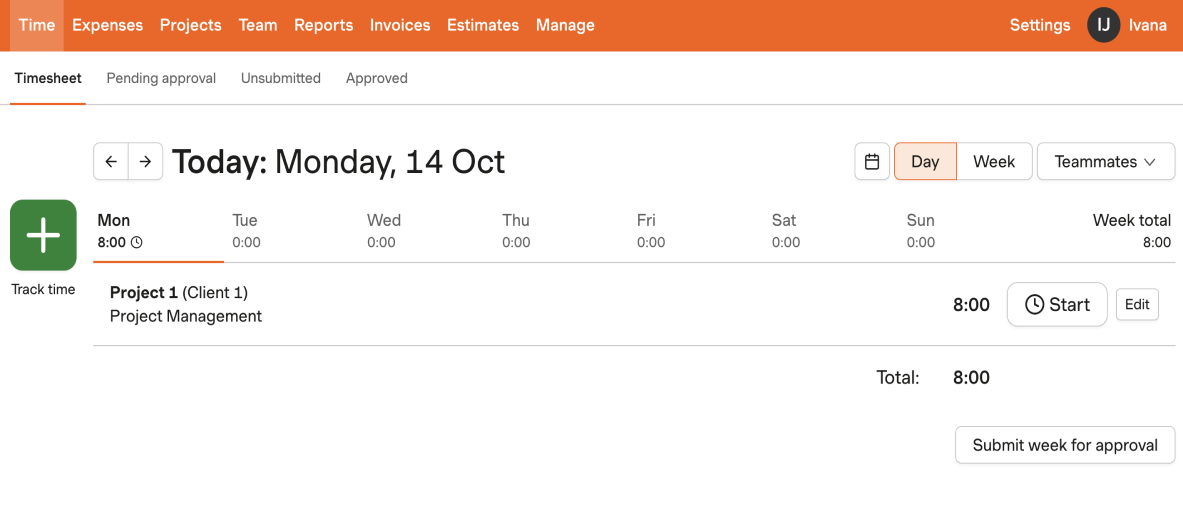
Harvest is a nonprofit timesheet software that helps you track employee and volunteer hours across projects with ease.
How does Harvest work?
As a time tracker, Harvest offers useful options for efficient nonprofit time tracking. With Harvest’s timesheet feature, I can track time spent on projects by starting the timer. Alternatively, I can add hours manually by filling out timesheets, as shown in the screenshot below:
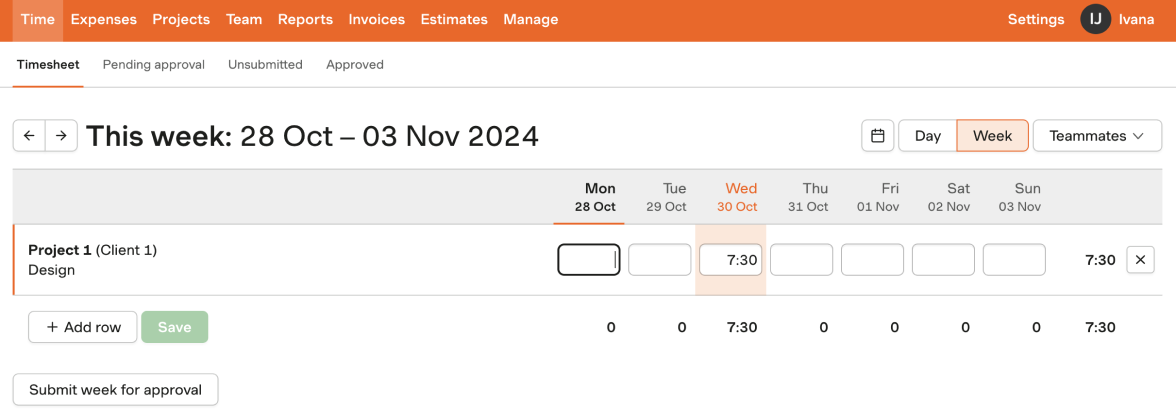
Apart from seeming a bit clunky to me, another thing Harvest lacks is the ability to save a timesheet as a template, which would be quite convenient.
In addition to its timekeeping capabilities, what I particularly like about Harvest is that it offers timesheet reminders for consistent time tracking, including:
- Recurring timesheet reminders to send automatically to my team every week,
- One-time timesheet reminders to send manually to individual team members, and
- Daily reminders that I can send to myself in case I forget to track time.
To enable automatic timesheet reminders for my team, first, I have to set a timesheet deadline in Harvest. Then, I need to specify when I want reminders to be sent and to whom.
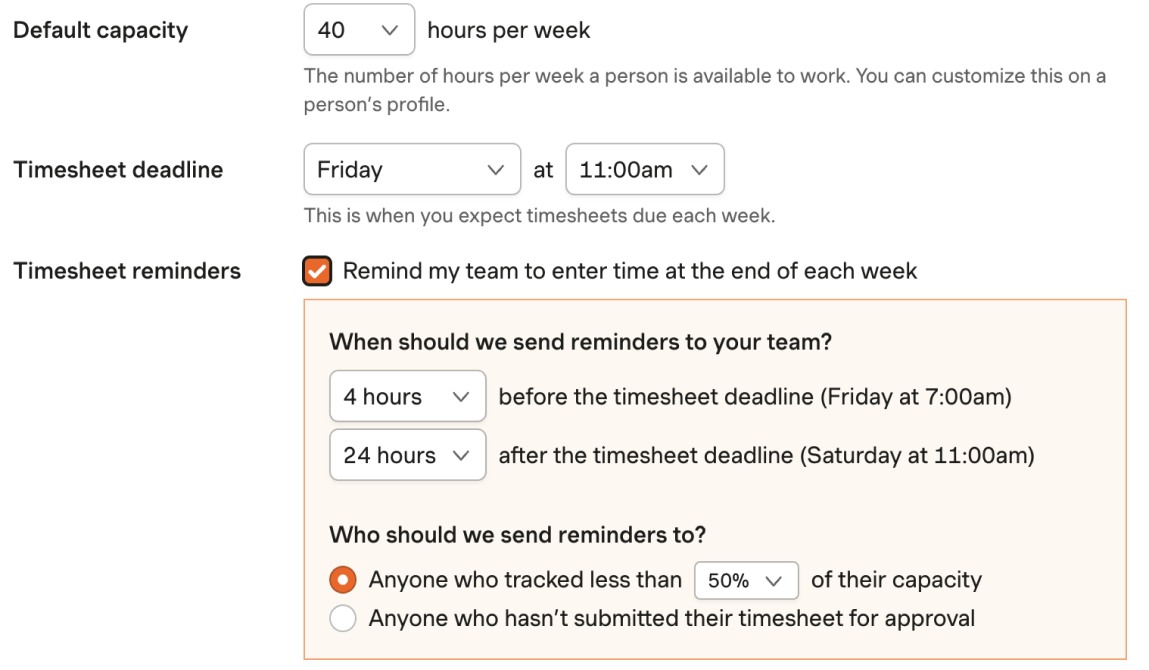
As you can see from the screenshot above, Harvest sends 2 reminders: one before the timesheet deadline and one after the deadline.
Also, I can choose whether I want to send reminders to anyone who hasn’t submitted their worked hours or to those team members who tracked less than X% of their capacity. This way, I can encourage my team to submit their timesheets on time for effective payroll processing.
Why use Harvest?
With its clean interface, Harvest makes time tracking easy for both managers and employees.
Harvest also lets me set and track my team members’ capacity, allowing me to know how much they’re working and identify overworked employees. This helps me prevent employee burnout.
Harvest pros
To see some of the main advantages of using Harvest, check the list below:
- It offers discounts for nonprofits on a paid plan (15% discount if billed monthly or 25% discount when billed annually).
- It provides a highly customizable timesheet reminder option.
Harvest cons
Here are some of Harvest’s disadvantages:
- The unlimited users and unlimited projects are only available in the paid version.
- It takes time to figure out how to set certain functionalities.
What’s new in Harvest?
In April 2024, the team behind Harvest released a mobile widget for iOS. Thanks to this update, Harvest iOS app users can now track time via timer without having to open the Harvest mobile app.
| Type of plan and availability | Harvest pricing and platforms |
| Free plan | Yes |
| Free trial | Yes, 30-day free trial |
| Cheapest paid plan | $10.80/seat/month (billed annually) |
| Availability | Android, iOS, Web, Mac, Windows |
💡 CLOCKIFY PRO TIP
For more information on what to consider when choosing the best time tracking software for your business, read the resource below:
#3: On The Clock — best for tracking employee overtime
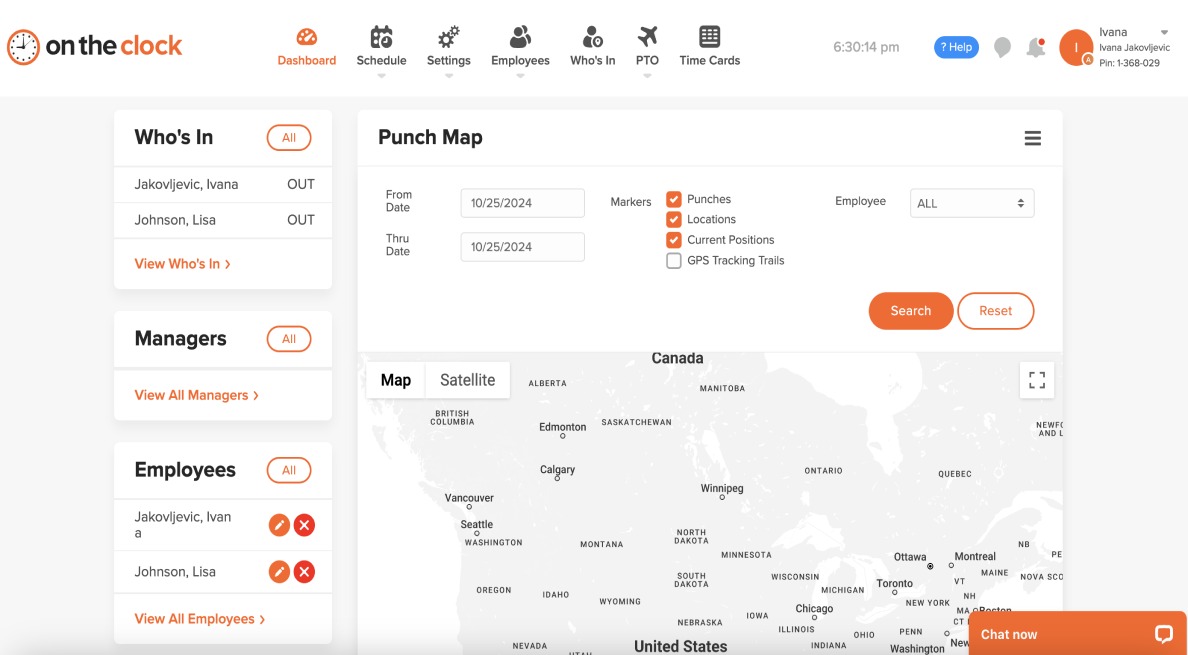
On The Clock is a nonprofit time tracking software that not only allows you to track employees’ worked hours but also schedule shifts, track breaks, and more.
How does On The Clock work?
With On The Clock, I can use the punch-in feature to track time as soon as I start my workday. Alternatively, I can add hours manually, as shown in the screenshot below:

Another way to log hours in On The Clock is by adding in and out times via the timecard feature. However, to access this option, I had to go through several steps, which I found quite impractical.
What I also noticed is that you can’t actually enter the exact start and end times. Instead, I had to select hours from the dropdown list of hours.
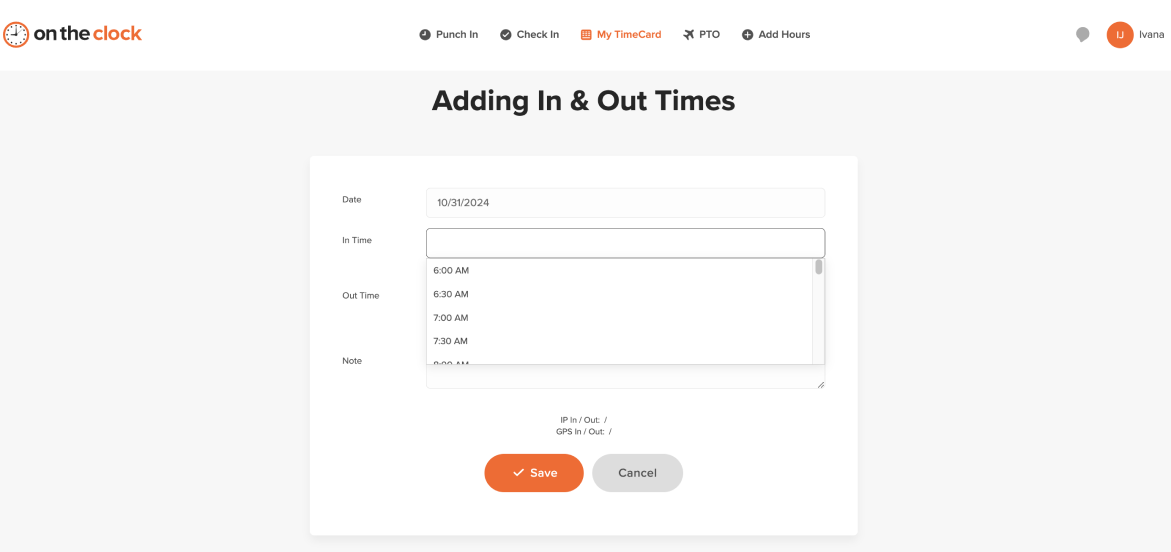
Although On The Clock offers interesting timekeeping options, what I find most useful about this tool is that it lets me set overtime alerts. This way, I can get notified before or after an employee hits overtime for easier overtime tracking.
Before enabling alerts in On The Clock, I have to specify what is considered overtime for each employee. For example, for one of my employees, I can set the overtime to include any hours worked after 40 hours per week.
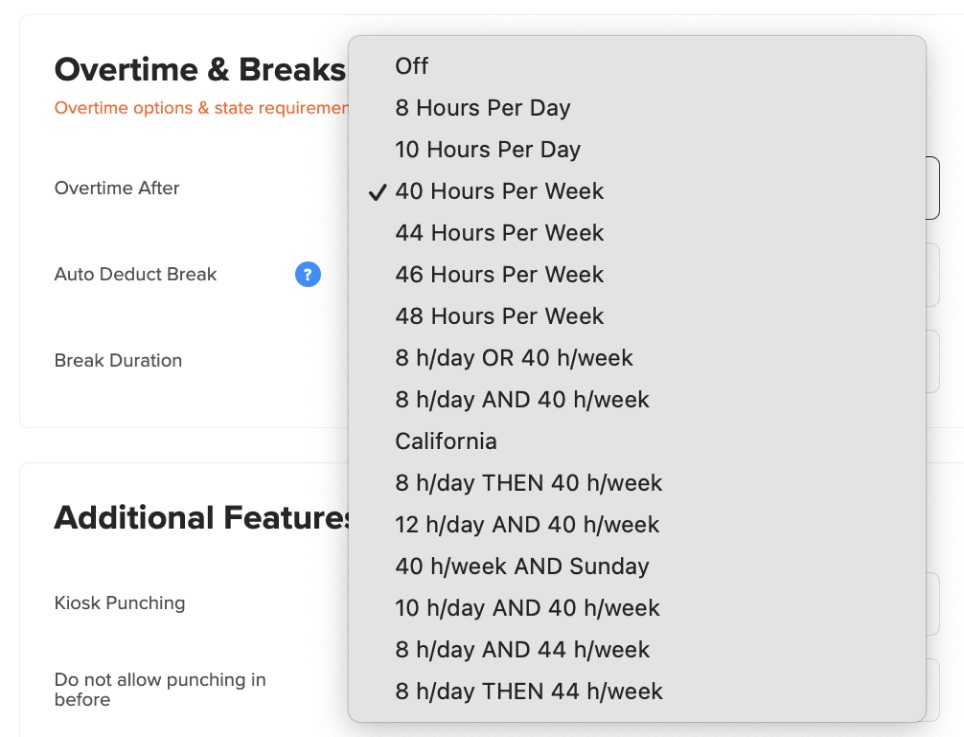
After defining overtime rules for each employee, I can set up overtime alerts.
To set and customize the alert in the app, I have to:
- Name the alert,
- Set when I want to receive the alert, and
- Select who will trigger the alert, depending on whose overtime I want to monitor.
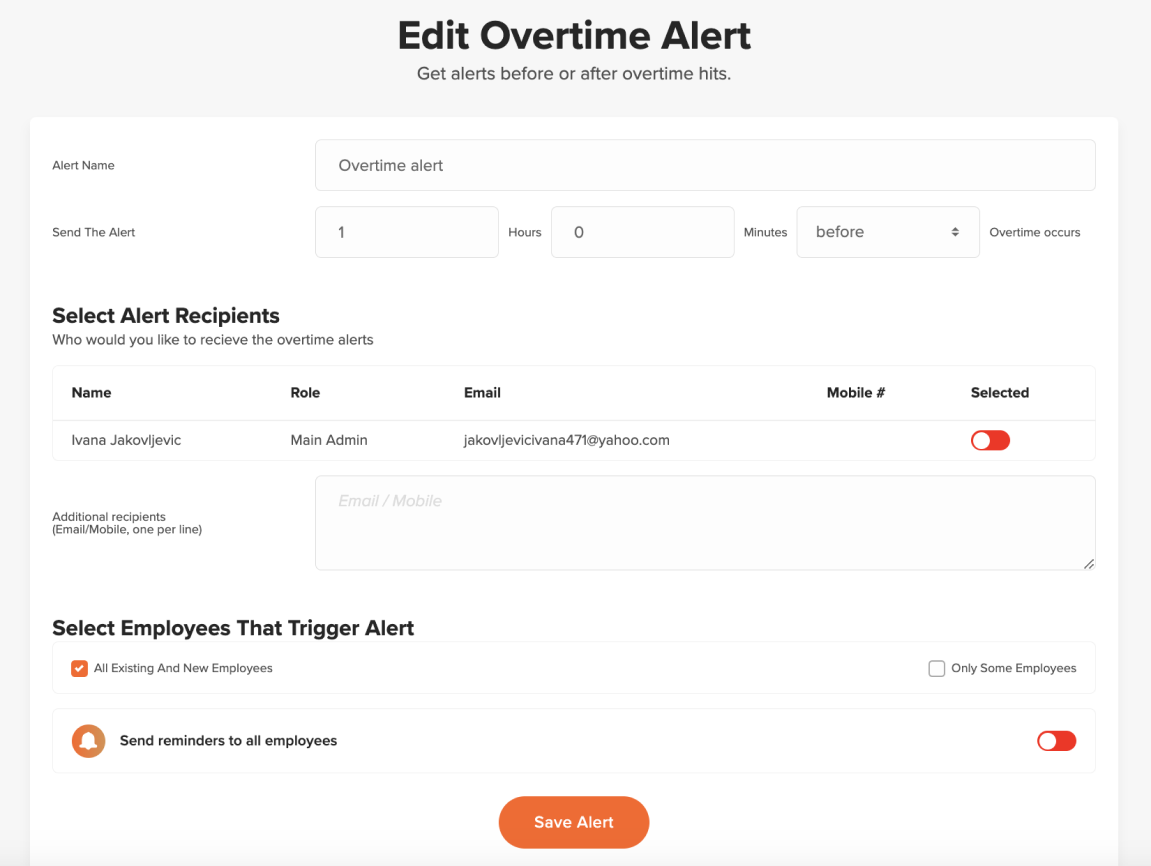
Additionally, On The Clock allows me to send reminders to my employees to notify them when they are about to hit overtime.
On The Clock helps me identify employees who often work extra hours so I can help them manage their time better. This way, I can minimize the need for overtime, ultimately reducing my nonprofit’s overtime costs.
Why use On The Clock?
If you need a solid time tracker that offers a punch-in and out option and the ability to track employee overtime, On The Clock may fulfill all your needs. It also provides fingerprint punching to help you prevent time theft in your organization.
On The Clock pros
These are some of the main benefits of using On The Clock:
- It has great customer support.
- It offers flexible time tracking options.
On The Clock cons
To see some of the drawbacks of using On The Clock, check the list below:
- It can take some time to understand how to use each feature.
- The app can be buggy, which hinders the user experience.
What’s new in On The Clock?
As of July 2024, managers can select an employee group and filter it using schedule filters in On The Clock for more efficient schedule management.
| Type of plan and availability | On The Clock pricing and platforms |
| Free plan | Yes (for businesses with up to 2 employees) |
| Free trial | Yes |
| Cheapest paid plan | $3.50/employee/month (for businesses with 3 employees) |
| Availability | Android, iOS, Web |
#4: Track It Forward — best for setting up events and shifts
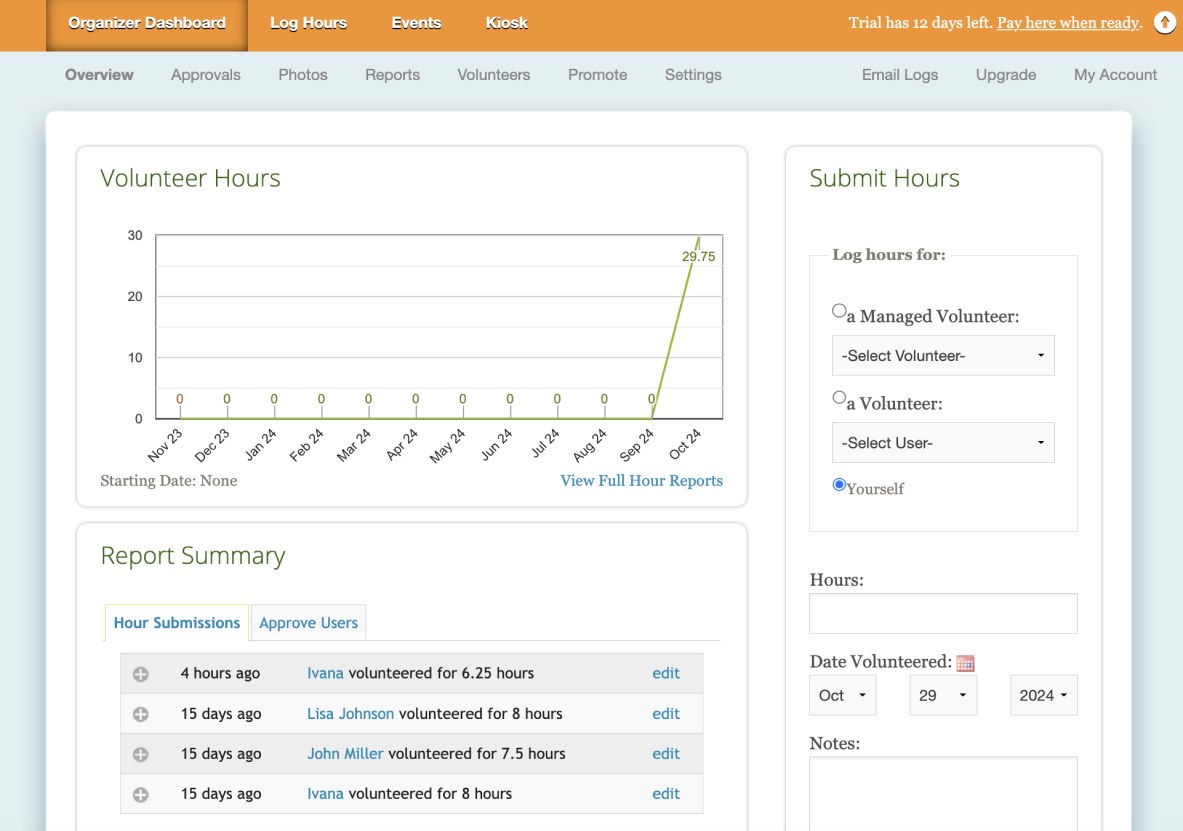
If you need a simple nonprofit time tracking app to track volunteer time and create events for volunteers, Track It Forward may be the right tool for you.
How does Track It Forward work?
The first thing I noticed when I started using Track It Forward is that, compared to some other apps on this list, it lacks some timekeeping features (e.g., there’s no option to track time via timer). Still, this tool allows me to log hours by:
- Entering the hours (e.g., 6 or 5.25),
- Selecting the hours from the dropdown list of hours, or
- Inserting the exact start and end times.
Note that in Track It Forward, the organizer sets how volunteers log their hours (it can be one of the options listed above).
As the organizer, I can, for example, set the time in and out option as a general rule for how volunteers log hours. In that case, volunteers will log hours by entering their start and end times, as shown in the screenshot below:
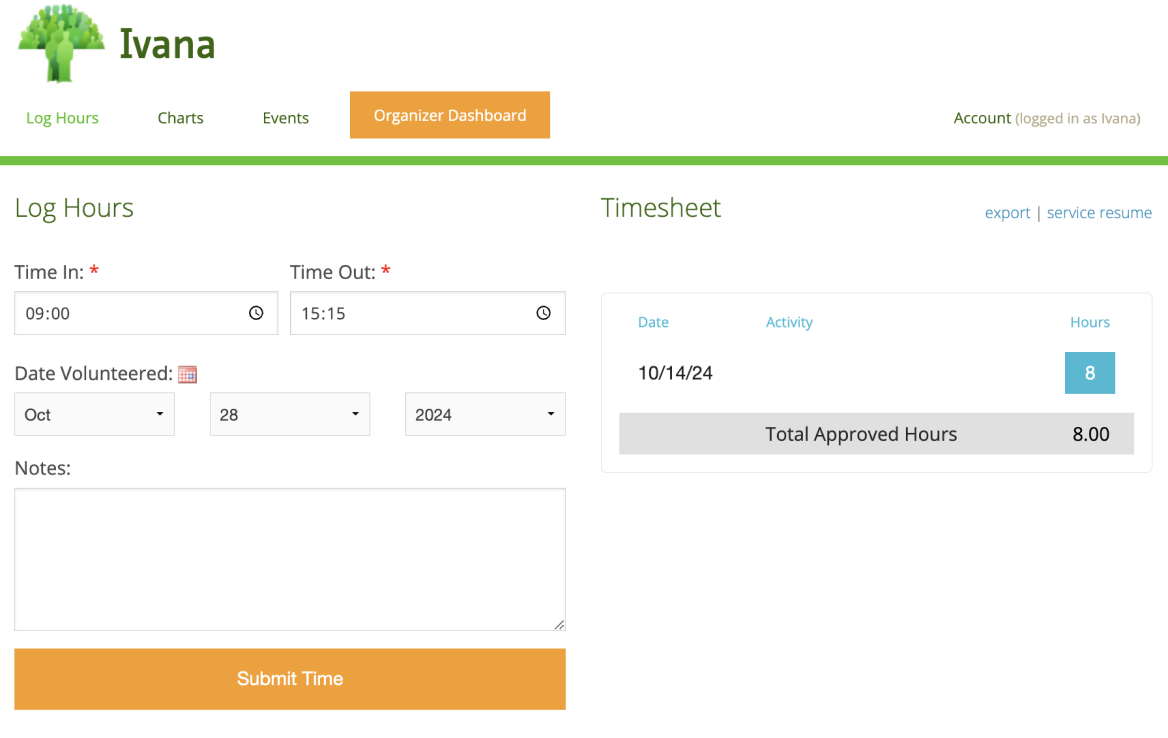
Apart from tracking volunteer time, what I especially like about this tool is that it allows me to set up events and shifts for volunteers so they can sign up for different activities.
To create the event in Track It Forward, I need to add:
- Event title,
- Event date (optional),
- Event description (optional),
- Shift times (optional),
- Shift description (optional), and
- Number of volunteers needed (it can be anywhere from 1 to 100, or I can choose the unlimited option).
I also need to choose how I want hours to be logged for this event (the event organizer can log volunteer hours in bulk, for instance) and specify whether I require volunteers to have a Track It Forward account to RSVP.
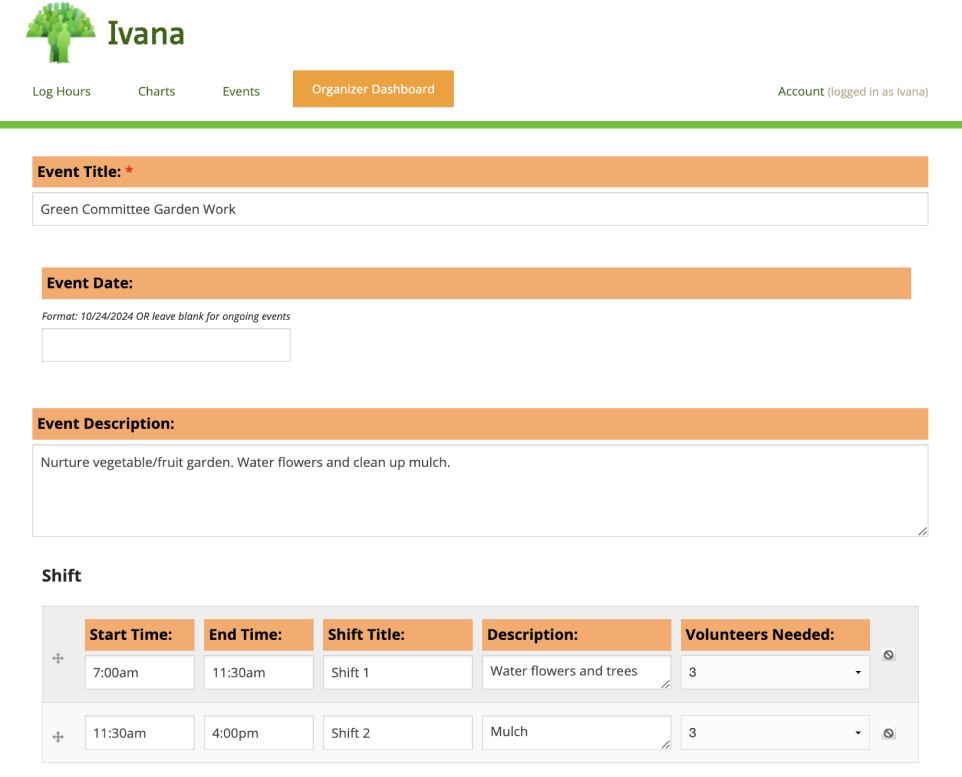
Once I create the event, volunteers can sign up for the desired shift. In case they need to cancel their RSVP, volunteers can easily do that in Track It Forward as well.
Why use Track It Forward?
Although a bit outdated in certain aspects, Track It Forward provides a simple time tracking solution that works. It also allows me to create events for my volunteers in an easy and efficient way.
Additionally, Track It Forward lets me set milestones for volunteers and track their progress toward achieving them. For example, a milestone may be to track 50 hours per month. This way, I can recognize and reward volunteers who meet specific hour targets, which can help improve volunteer retention in my organization.
Track It Forward pros
These are some of Track It Forward’s key advantages:
- You can send reminder emails to your volunteers 2 days before the event.
- It offers reports to check all your volunteers’ time entries or see all events you ever created.
Track It Forward cons
Here are some of the biggest disadvantages of Track It Forward:
- It has an outdated interface that’s a bit difficult to navigate.
- Certain options, like the ability to approve hours and offline mode, are only available in Premium and Advanced plans.
What’s new in Track It Forward?
The last time Track It Forward released some updates was in the second quarter of 2024. One of these updates includes the option to filter volunteers by the number of hours logged or last accessed date on the Volunteers page.
| Type of plan and availability | Track It Forward pricing and platforms |
| Free plan | Yes (available for grassroots organizations with fewer than 25 volunteers) |
| Free trial | Yes, 30-day free trial |
| Cheapest paid plan | $12/month (billed annually) |
| Availability | Android, iOS, Web |
Get Clockify as your all-in-one time tracking solution for nonprofits
As a comprehensive timekeeping solution for businesses and organizations of all types and sizes, Clockify offers many possibilities — from tracking work hours and time off to scheduling volunteer assignments.
It also has an advanced reporting system so you can see where your team’s time goes and export data whenever you need it.
Moreover, Clockify offers seamless integrations with 80+ web apps, including integrations with project management tools such as Asana and Trello and productivity apps such as Google Calendar and Notion.
As for Clockify’s support, it’s available 24/7 for all users, no matter which plan they’re on — which comes in handy if you’re on a tight budget.
Track time easily and efficiently and lead your organization to success.



